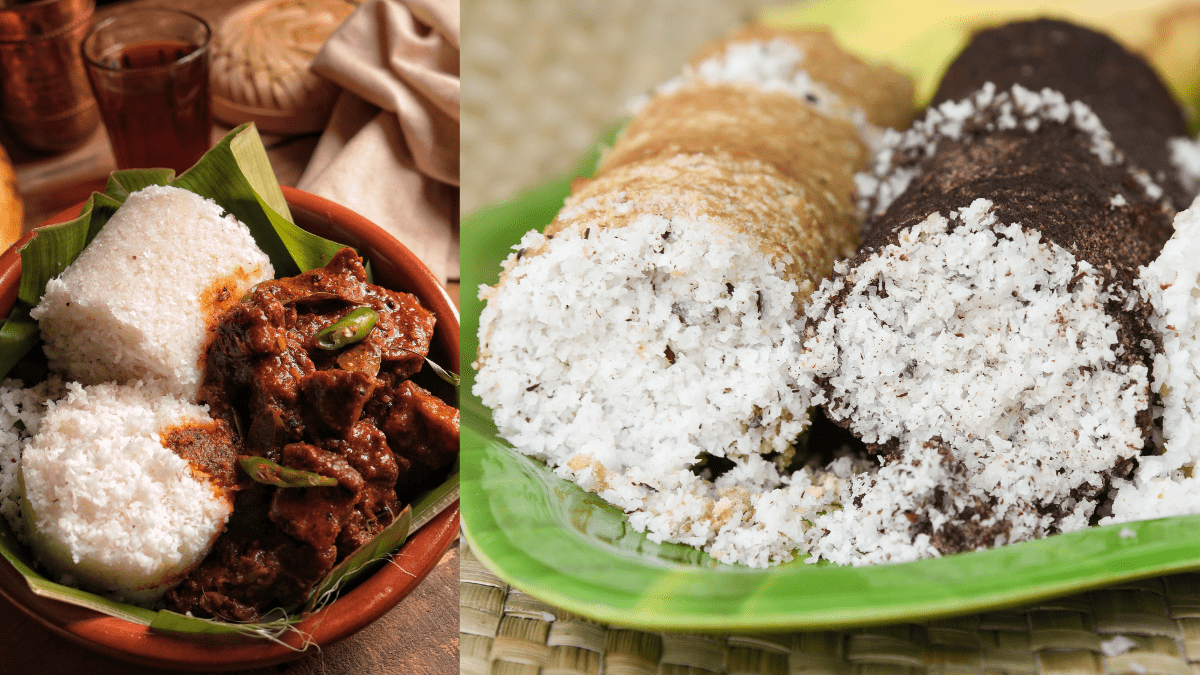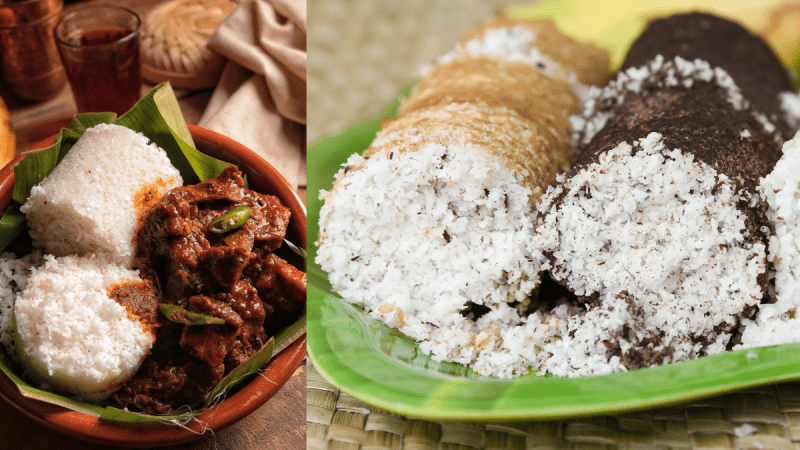Puttu, a beloved breakfast staple in Kerala that found its way from the farmer’s breakfast to a cherished symbol of South Indian cuisine, boasts a history as rich and flavourful as the dish itself. While its exact origin remains veiled in time, evidence suggests its roots intertwine with the culinary traditions of South India.
While the earliest documented mention comes from the 15th-century Tamil text “Thirupugazh,” some historians believe the dish might have predated this reference. Kerala and neighbouring Tamil Nadu share a long history of cultural exchange, making it plausible that puttu originated in either region.
From A Farmer’s Necessity to Culinary Delight

Traditionally, puttu was a dish of necessity. In Kerala’s agrarian society, farmers and labourers required a portable, nutritious, and quick breakfast to fuel their long days. Kerala’s abundance of rice made it a practical and affordable base for puttu. Bamboo or coconut shells for steaming highlighted the resourcefulness of their creators. The simplicity of the recipe, using readily available rice and coconut, made puttu the ideal solution.
The true magic of puttu unfolds when paired with its traditional accompaniments. A steaming hot bowl of kadala curry, a black chickpea dish simmered in aromatic spices, provides a perfect counterpoint to the subtle flavours of the puttu. Coconut chutney, with its refreshing taste and creamy texture, is another popular choice. For a simpler meal, ripe bananas, palm sugar, or even a drizzle of ghee can elevate the puttu experience.
Also Read: Puttu Ice Cream, A Take On Popular Kerala Delicacy Leaves Foodies Drooling
Simplicity and Versatility: The Essence of Puttu & Its History

The essence of puttu lies in its simplicity. The key ingredients are coarsely ground rice or puttu flour, freshly grated coconut, and a touch of salt. Early iterations likely involved grinding rice in stone mortars and steaming the mixture in natural containers like bamboo tubes or coconut shells. Traditionally, the dish is steamed in a special vessel called a “puttu kudam” or “puttu kutti.” This cylindrical steamer allows for the creation of individual portions, enhancing the visual appeal and practicality of the dish.
Early iterations likely involved grinding rice in stone mortars and steaming the mixture in natural containers like bamboo tubes or coconut shells. While the base recipe is straightforward, there are variations abound. Some variations explore other grains like wheat flour, ragi (finger millet) flour, tapioca, and corn flour.
This caters to dietary preferences and regional influences. The classic coconut layer finds exciting alternatives. Egg curry or mashed banana fillings add a touch of savoury or sweet, respectively. “Irachiputtu” is a version where rice is layered with spiced mincemeat, reflecting the influence of diverse communities.
Also Read: The Ultimate Guide To Backwater Life Inside A Traditional Houseboat On Kerala’s Vembanad Lake
Puttu‘s history is a fascinating blend of cultural exchange, practicality, and tradition. From its humble origins as a farmer’s breakfast to its contemporary variations, puttu continues to be a cherished symbol of South Indian cuisine, offering a delicious glimpse into the rich heritage of Kerala.
Cover Image Courtesy: Canva
For more such snackable content, interesting discoveries and the latest updates on food, travel and experiences in your city, download the Curly Tales App. Download HERE.
First Published: March 13, 2024 3:06 PM




